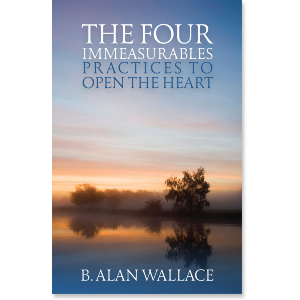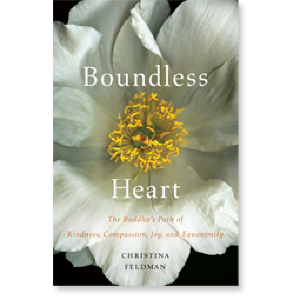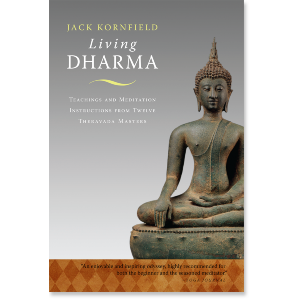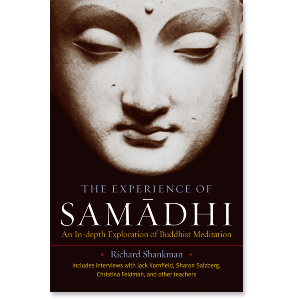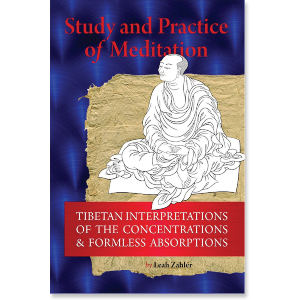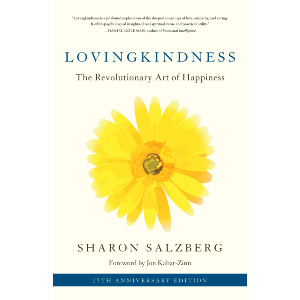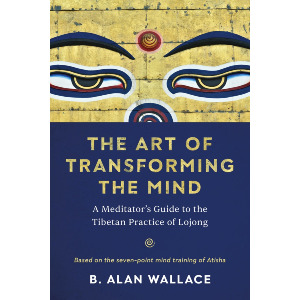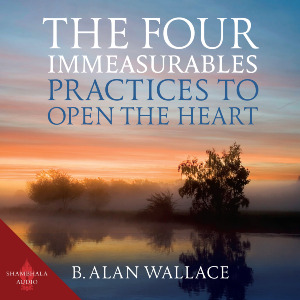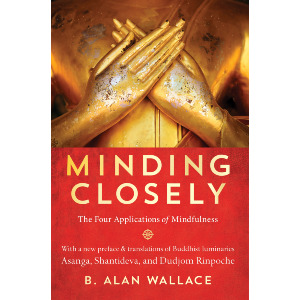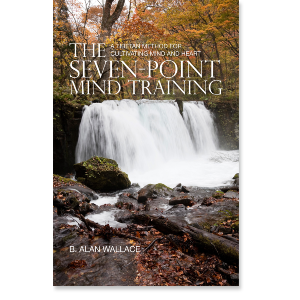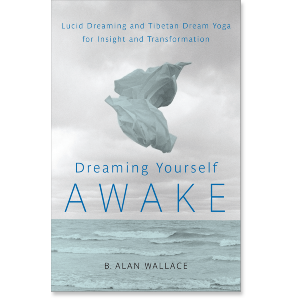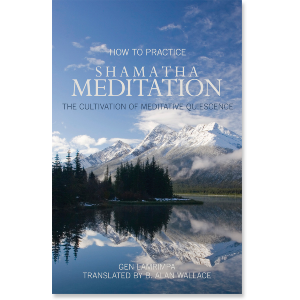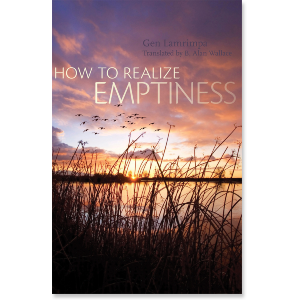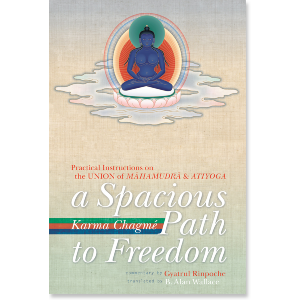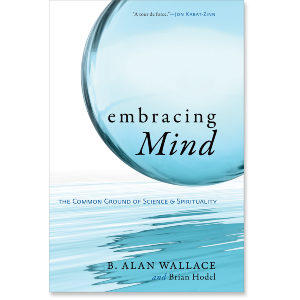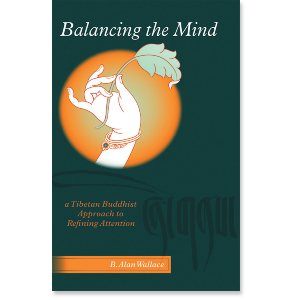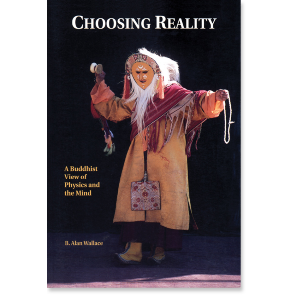
The following is an excerpt from
The Four Immeasurables*
By B. Alan Wallace
Edited by Zara Houshmand
*previously titled Boundless Heart
$16.95 - Paperback
| The following article is from the Summer, 1999 issue of the Snow Lion Newsletter and is for historical reference only. You can see this in context of the original newsletter here. |
On these foundational practices of Theravada Buddhism, Alan brings to bear the insights and approaches of the Tibetan tradition. Juxtaposed with the Four Immeasurables, he presents teachings on shamatha meditation practice to empower the mind and render it fit for service. His meditation instructions provide the steps for the complete achievement of shamatha.
Your body becomes transformed into a body of light that emanates from your heart.
The Four Immeasurables is based on teachings given during a week-long retreat at a remote and beautiful site in the Eastern Sierras, and in its tone we experience the intimacy and focus of the setting. In addition to Alan's unique style of presentation, blending vivid story-telling with incisive analysis, the book includes both guided meditations and lively discussions in which the participants grapple with the implications of these teachings for their own lives.
An excerpt from The Four Immeasurables follows which discusses the mantra Oṃ maṇi padme hūṃ
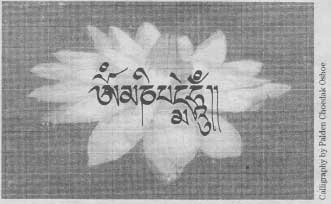
A Meditation on the Jewel in the Lotus
The jewel in the lotus is a wonderful metaphor for the essential nature of the mind. It integrates two very different approaches, recognizing that there is a worthy role for striving, for engaging in methods, for growth and development; and at the same time recognizing that all these methods are fundamentally designed simply to bring to light what is already there, in all of its perfection, in all of its completeness. This is the pure fountain of loving-kindness and wisdom we are trying to cultivate.
The mantra Oṃ maṇi padme hūṃ is associated with Avalokitesvara, the embodiment of enlightened compassion, and the mantra is the verbal articulation of that same quality of compassion. Among the many interpretations of this mantra, here is one I find especially meaningful.
- Om signifies the manifest body, speech, and mind.
- Mani in Sanskrit means jewel.
- Padme, pronounced peme in Tibetan, means in the lotus.
- Hum, pronounced by the Tibetans as hoong, is a syllable suggestive of the deepest, essential, transcendent nature of consciousness.
So the mantra starts out from the manifest state of the body, speech, and mind, then through the metaphor of the jewel in the lotus, goes to the depths of consciousness.
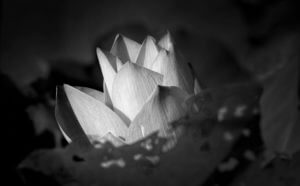
As you chant the mantra let your imagination come into play. The metaphor of the lotus is that of a flower that springs forth from the mud, from some dark and gooey ooze. It rises through the water and then finally emerges into the sunlight, bursting into blossom. Imagine, as the lotus opens up, right in the middle of it is a jewel. The lotus is the unfolding of our lives: the evolution of our own body, speech, and mind; our spiritual maturation from lifetime to lifetime; our development towards enlightenment. This metaphor for growth and movement towards spiritual awakening carries the nuance: Strive diligently! It carries a lot of emphasis on method and listening to teachings: What are the proper methods? How do I counter these difficulties? How do I move past this obstacle? This developmental approach is directional, a development towards something.
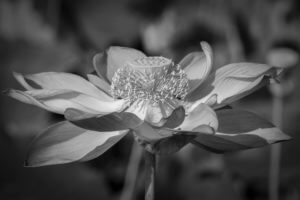
At the same time, as this lotus opens up, the jewel is right there in the middle. It has been there all along, even when the lotus was a closed bud submerged in the ooze. That jewel is the buddha-nature. The jewel is not developing: you don't need to add anything to it at all, and you can't subtract anything from it at all. It only needs to be discovered or revealed, so you can see what is already there.
As you chant, bring out the poetry in the practice and use the imagery of the metaphor. Imagine this jewel of the purity and perfection of your own buddha-nature. Imagine it as a pearl of white light emanating from your heart and suffusing your body. It's not just a physical light like turning on a light bulb, but a light that embodies and expresses purification, joy, and compassion. Imagine it coming from an inexhaustible source, saturating your body, suffusing and transmuting your body. Your body becomes the very nature of this light: not simply blood, organs, tissue, and bone with some light glowing through, but a body transformed into a body of light that emanates from your heart.
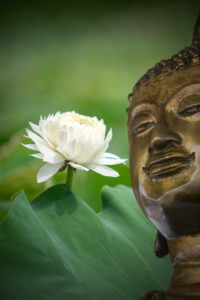
When your body is completely saturated, then let the light spread forth in all directions. Use this as an opportunity to bring to mind areas of the world that you think are really in need of some light. Send it out there, and imagine this light bringing the very same qualities of purification, joy, and compassion to those individuals or communities that most need it.
 B. Alan Wallace has authored, translated, edited, and contributed to more than forty books on Tibetan Buddhism, science, and culture. With fourteen years as a Buddhist monk, he earned a BA in physics and the philosophy of science and then a PhD in religious studies.
B. Alan Wallace has authored, translated, edited, and contributed to more than forty books on Tibetan Buddhism, science, and culture. With fourteen years as a Buddhist monk, he earned a BA in physics and the philosophy of science and then a PhD in religious studies.
Zara Houshmand is an Iranian-American writer. She is active in modern Iranian theater as well as traditional Balinese puppetry, and her own plays have been produced in San Francisco, Los Angeles, and New York.
Related books
$16.95 - Paperback
$29.95 - Paperback
$29.95 - Paperback
Study and Practice of Meditation
$39.95 - Paperback
$16.95 - Paperback


